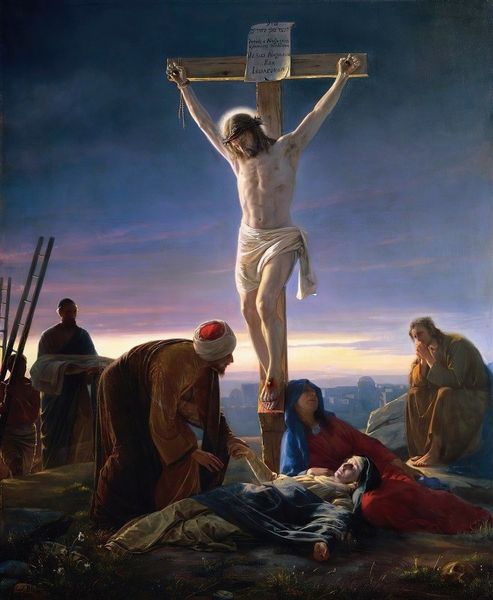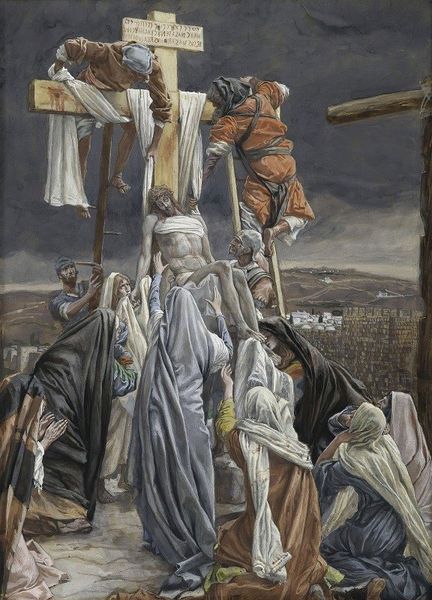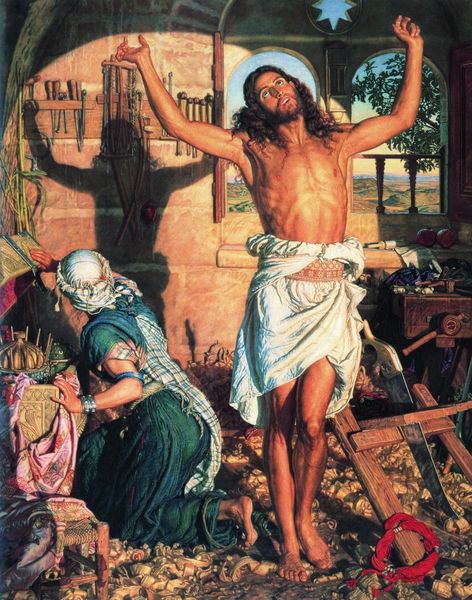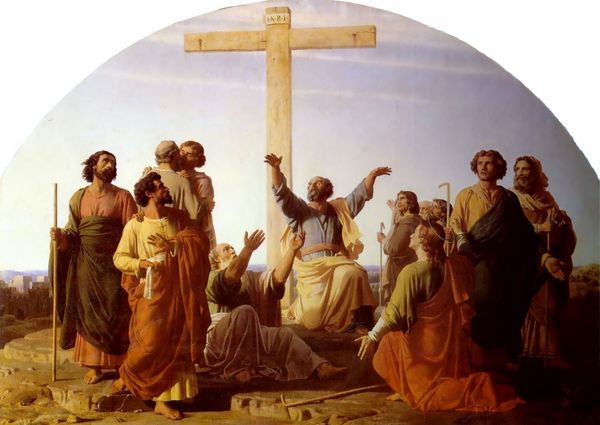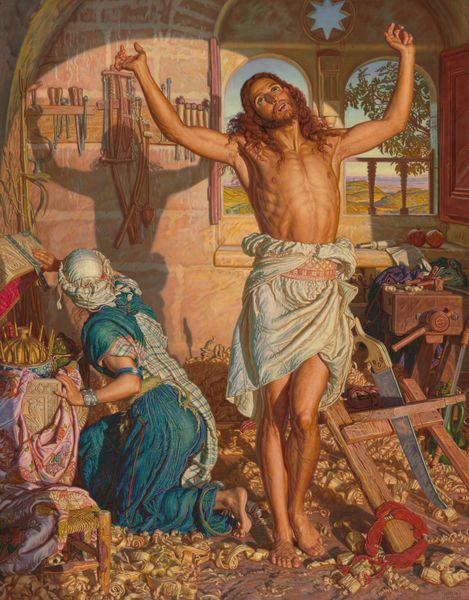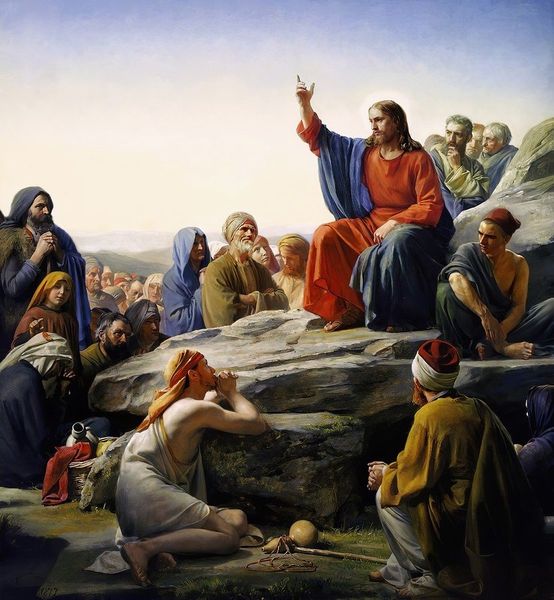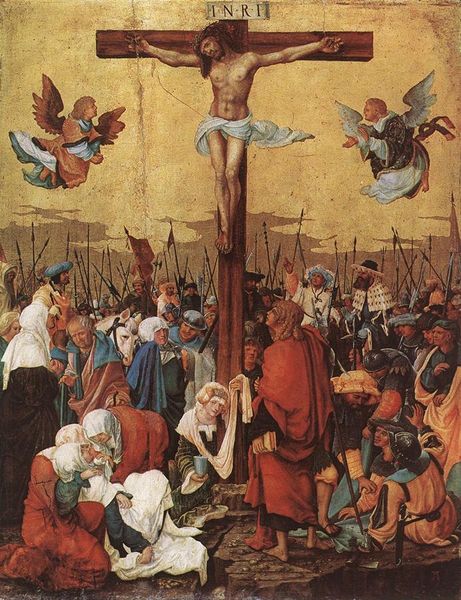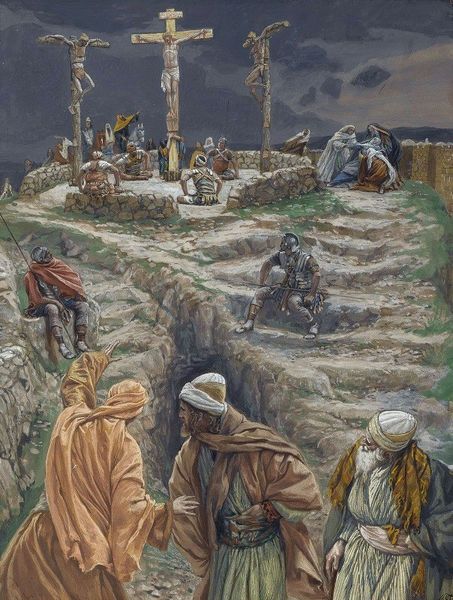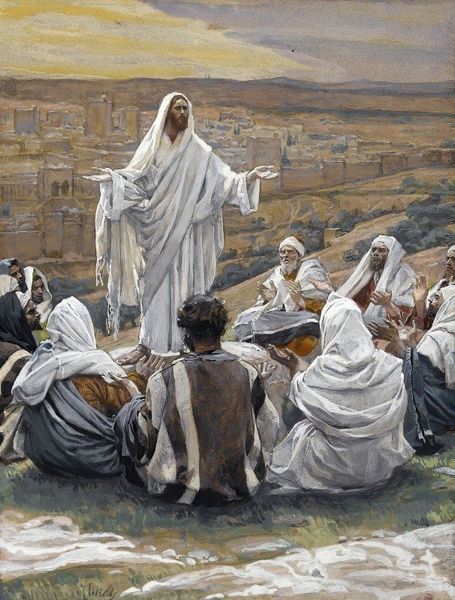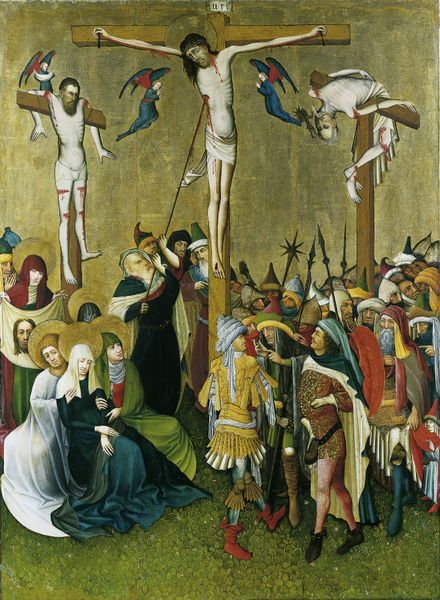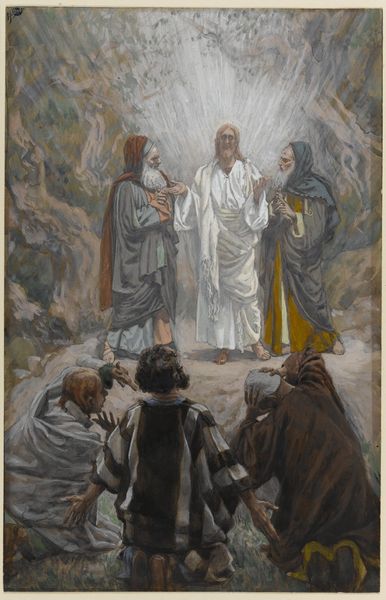
painting, oil-paint
#
narrative-art
#
baroque
#
painting
#
oil-paint
#
figuration
#
oil painting
#
history-painting
#
academic-art
#
portrait art
Copyright: Public Domain: Artvee
Curator: Here we have "Crucifixion", an oil painting. Its painter is Carl Bloch. What's your initial take? Editor: It's bleak. The palette feels drained, and there's an oppressive weight created by the mass of figures surrounding the central cross. Curator: Agreed. Bloch, working within a later academic style influenced by the Baroque, heavily leans into naturalistic detail, using the medium to portray the intense drama of the crucifixion. Considering Bloch was commissioned by the Church of Jesus Christ of Latter-day Saints, it’s crucial to remember its function as a narrative and didactic tool for disseminating its beliefs. Editor: Notice the asymmetry? The central figure on the cross disrupts what could have been a very formulaic composition. Bloch skillfully manipulates light—particularly highlighting the suffering central figure—creating a focal point against a crowd consumed by this theatrical depiction. It is all meticulously arranged, driving the observer's gaze and amplifying the painting's intended emotion. Curator: Precisely. And we mustn’t forget that paintings such as these operated within a clear commercial network; reproductive prints of works like Bloch’s circulated widely to promote idealised narratives for the masses. His labour thus fueled both a system of faith and the apparatus of artistic commerce in the 19th century. The choice of oil paint allows a verisimilitude essential to his narrative goals; consider how different the effect would have been had Bloch used frescos or other material means of painting. Editor: It’s all about calculated drama, the visual construction and deployment of which relies entirely on our ability to decode the symbolism of pose and expression. I see here how the piece uses established painterly traditions to portray not just death but faith as spectacle. Curator: Seeing the cultural history that surrounds pieces such as these certainly encourages thinking about how materials, the act of their production, and cultural functions interplay. Editor: Absolutely. Looking at these more somber elements helps to refocus thoughts about this artwork’s overall impact.
Comments
No comments
Be the first to comment and join the conversation on the ultimate creative platform.
